|
|
|
Privacy Policy | Editorial Policy | Join the Association | List of Members | Contact us | Print this page |
|
|
Out in the shed with Ted.
Ted McEvoy. |
|
|
|
|
|
Audio sources expand and contract.
|
|
|
Burnt CD’s
Some people say that the CD’s that you ‘burn’ yourself can only be expected to last from five to ten years and not a whole lot more. They also suggest that for secure long-term storage, high-quality magnetic tape is the way to go.
They’re wrong!!!
Factory-pressed
CDs are totally different from the ones you burn yourself. In a pressed
CD, the data is literally "moulded into" (actually pressed into) the media
and will never disappear unless the CD is physically
The CD’s you burn
yourself don't have any bumps or flat areas like the factory or pressed
ones. Instead, they have a smooth reflective metal layer, which rests on
top of a layer of photosensitive dye. When the disc is blank, the dye is
translucent and light can shine through and reflect off the metal surface.
But when you heat the dye layer with concentrated
light of a
particular frequency and intensity, the dye turns opaque: It darkens to
the point that light can't pass through it. The light from the player's
laser beam will only bounce back to the sensor
Re-writable or CD-RW discs have a built in erase function so you can record over old data you don't need anymore. These discs are based on phase-change technology. In CD-RW discs, the phase-change element is a chemical compound of silver, antimony, tellurium and indium. As with any physical material, you can change its form by heating it to certain temperatures. When the compound is heated above its melting temperature (around 600 degrees Celsius), it becomes a liquid; at its crystallization temperature (around 200 degrees Celsius), it turns into a solid.
In a CD-RW disc, the flats and bumps of a conventional CD are represented by phase shifts in a special compound. When the compound is in a crystalline state, it is translucent, so light can shine through to the metal layer above and reflect back to the laser assembly. When the compound is melted into an amorphous state, it becomes opaque, making the area non-reflective. These phase-change compounds can be "locked into place": They persist even after the material cools down again. If you heat the compound in CD-RW discs to the melting temperature and let it cool rapidly, it will remain in a fluid, amorphous state, even though it is below the crystallization temperature. In order to crystallize the compound, you have to keep it at the crystallization temperature for a certain length of time so that it turns into a solid before it cools down again.
In the compound used in CD-RW discs, the crystalline form is translucent while the amorphous fluid form will absorb most light. On a new, blank CD-RW, all of the material in the writable area is in the crystalline form, so light will shine through this layer to the reflective metal above and bounce back to the light sensor. To encode information on the disc, the CD burner uses its write laser, which is powerful enough to heat the compound to its melting temperature. These "melted" spots serve the same purpose as the bumps on a pressed CD and the opaque spots on a CD-R: They block the "read" laser so it won't reflect off the metal layer. Each non-reflective area indicates a 0 in the digital code. Every spot that remains crystalline is still reflective, indicating a 1.
Then, by holding the material at the correct temperature, the erase laser restores the compound to its crystalline state, effectively erasing the encoded 0’s. This clears the disc so new data can be encoded. CD-RW discs do not reflect as much light as pressed or burnt CD’s so they cannot be read by some older CD players.
No matter what type of CD we are talking about, the reflective and non-reflective patterns are incredibly small, and they are burned and read very quickly with a speeding laser beam. The system is so basic that you can encode just about any sort of digital information. There is no inherent limitation on what kind of mark pattern you put down on the disc. In the CD-RW system, though, the chances of a data error are fairly high.
A properly burned one-time media CD (I find that -R media is the best) has an expected life of decades, possibly even centuries. The OSTA (Optical Storage Technology Association) of California, in a report HERE suggests that optical recordable media will last from 50 to 200 years. This observation is backed by quite a number of studies done both by the media makers and others.
There are several factors that affect how long data will last on a CD, and these are:
As the data “exists” in a dye layer on the label side of the media, this can be scratched from the back (from the label side), which will literally and directly destroy the data as there is no reflective layer to ‘bounce’ the laser. The front side is clear plastic but can also be scratched, but while front side damage may make the data less readable or completely unreadable, the data is still intact and undamaged on the label side, and the scratches on the front can normally be removed by polishing the plastic.
You have to be careful when gluing a label or writing on a CD with a felt pen. The glues in some adhesive labels, or the solvents in felt pens, when applied to the label side (the side containing the data) can SLOWLY penetrate the reflective backing and dye layers and destroy the data. Therefore, for archival media, the safest policy is to not label the CD itself at all, or, if you must label it, use either a label or a pen and write on the clear inner hub (where there is no data at all).
Re-writable “RW” media is FAR less stable than one-time (“R”) media and should not be used for any permanent recordings of any kind whatsoever. There is no question that RW media can and does “fade”. It is good advice not to use “RW” media for anything that they want to consider permanent. Since RW media is also both more expensive (a lot more expensive) and slower, the decision to never even buy RW media in the first place is an easy one.
|
|
|
Miss Beatrice, the church organist, was in her eighties. She was admired for her sweetness and kindness to all. One afternoon the pastor came to call on her and she showed him into her quaint sitting room. She invited him to have a seat while she made him a cup of tea. As he sat facing her old Hammond organ, the young minister noticed a glass bowl sitting on top of it. The bowl was filled with water, and in the water floated, of all things, a condom!
When she returned with tea and scones, they began to chat. The pastor tried to stifle his curiosity about the bowl of water and its strange floater, but soon it got the better of him and he could no longer resist. 'Miss Beatrice', he said, 'I wonder if you would tell me about this?' pointing to the bowl. 'Oh, yes,' she replied, 'Isn't it wonderful? I was walking through the Park a few months ago and I found this little package on the ground. The directions said to place it on the organ, keep it wet and that it would prevent the spread of disease. Do you know I haven't had the flu all winter.' |
|
|
Video Ram.
Both shared and dedicated memory have their advantages and drawbacks, but which one is best for you.
To understand shared memory, you first need to know what memory is. Memory usually refers to Random Access Memory, or RAM. When you run programs or applications on your computer, the code of those applications is loaded into the RAM, from where it is executed. The information stored in the RAM can be accessed in any random order (as opposed to a sequential access), hence the code in the RAM can be executed quickly and when required, making RAM perfect for this task.
Your monitor/LCD display needs to be instructed how to display what you see on the screen. This information is placed by the operating system and the applications you run in a similar form of random quick access memory. This could be the computer’s all-purpose system RAM, or RAM that has been specifically allotted to this task, such as a video/graphics card’s built in memory. In the latter case, this memory would be reserved solely for the task of screen display, and would be isolated from the memory available for other tasks. This is known as dedicated memory. But in the former case, you might see sharing of memory between the display and the computer applications.
In shared memory for video, the memory used for displaying the contents on the screen, will be part of the memory used by the computer for other tasks. In other words, your video RAM will actually be a part of the all-purpose system RAM. Thus, if your computer has a system RAM of 256 MB, and the current monitor settings (screen size, pixels per inch etc) require 56 MB of memory to function correctly, then your operating system and applications will have only 200 MB of RAM available to them. The other 56 MB of RAM is shared with the computer’s display, and since the display is always on, it’s never available for anything but video/display. This means the programs and applications you run now have 56 MB less of memory in which to operate at all times.
The advantage of shared RAM is that it costs less than dedicated video RAM. If you aren’t going to need a lot of memory, and you don’t really want to spend much money on it, then shared RAM would be a perfectly good option. Also if you plan to buy a lot of RAM, more than you need for your computer activities, then it doesn’t hurt to share some with the video. If you get 1 GB of memory, then sharing 56 MB on display would usually be fine, since there would be 944 MB left for other processes.
However, there are disadvantages too. The RAM assigned to the display will be constantly used by the display, thus it isn’t really shared but rather lost to the video. The amount of shared RAM is pre-set by your BIOS, it is not just a case of ‘grabbing as much as is needed’. In some cases there may not be enough RAM shared with the video, although you have more system RAM than you need to run your programs. This will make it hard to play today’s graphics intensive games. In most computers the amount of shared RAM can be changed, but this usually involves entering into the BIOS and changing settings there. It is not a good idea to tamper with the BIOS if you don’t know what you’re doing, since you may inadvertently stuff things up. And, in most cases you can only increase the amount of shared RAM to a certain limit predetermined by the manufacturer. Thus you may not be able to share as much as you need.
Now you’re probably thinking it's just easier to go with dedicated memory rather than shared. Well no, that’s not right either. I had a laptop which had 384 MB of RAM. This was enough to run most memory guzzling software, however, it also had a low end graphics card which only had 64 MB of built in dedicated video memory. So although I’m using dedicated memory rather than shared, I wasn’t able to play the newest games which require heavy graphics.
In the end you realize the question isn’t about whether shared memory is a good thing or not. It’s about how much memory you need for each task, and choosing the optimum solution.
So, the 64 million dollar question is, How much memory do YOU need? For surfing, emails and photo editing, the amount of memory required is minimal, and you would be fine with any shared memory scheme, since even very low memory would meet the minimum requirements. Movie watching is also possible on a computer with low video RAM (shared or unshared).
However, if you are a game-ophile and play the latest 3D games (not packman), or you’re into video editing in a big way, you would want a system RAM of 2 Gig or more and a separate high end graphics card with dedicated memory of 256 MB or more.
|
|
|
An Australian woodpecker and a Kiwi woodpecker were on the Gold Coast arguing about which country had the toughest trees. The Australian woodpecker claimed that Australia had a tree that no woodpecker could peck. The Kiwi woodpecker accepted his challenge and promptly pecked a hole in the tree with no problem. The Australian woodpecker was amazed.
The Kiwi woodpecker then challenged the Australian woodpecker to peck a tree in Rotorua that was absolutely 'un-peckable'. The Australian woodpecker expressed confidence that he could do it and accepted the challenge. The two flew to Rotorua where the Australian woodpecker easily pecked the so-called 'un-peckable' tree almost without breaking a sweat.
After much woodpecker pondering, they both came to the same conclusion.
Apparently, your pecker gets much harder when you're away from home |
|
|
Correction - PBS Safety Net.
Last issue we said "If you do not have the magic card, then once you
have spent $1,141.80 on PBS
What I should have said was "If you do not have the magic card, then once you have spent $1,141.80 in a calendar year on PBS prescriptions, then all your further prescriptions are reduced in cost to $5.00".
We've now fixed the error back in Vol 24, and if you want more info on the scheme you can get it HERE.
|
|
|
It was April and the Aboriginals in a remote part of Northern Australia asked their new elder if the coming winter was going to be cold or mild. Since he was an elder in a modern community he had never been taught the old secrets. When he looked at the sky he couldn't tell what the winter was going to be like. Nevertheless, to be on the safe side, he told his tribe that the winter was indeed going to be cold and that the members of the tribe should collect firewood to be prepared.
But being a practical leader, after several days he had an idea. He walked out to the telephone booth on the highway, called the Bureau of Meteorology and asked, 'Is the coming winter in this area going to be cold?' The meteorologist responded, 'It looks like this winter is going to be quite cold.'
So the elder went back to his people and told them to collect even more wood in order to be prepared. A week later he called the Bureau of Meteorology again. 'Does it still look like it is going to be a very cold winter?' The meteorologist again replied, 'Yes, it's going to be a very cold winter.' The elder again went back to his community and ordered them to collect every scrap of firewood they could find. Two weeks later the elder called the Bureau again. 'Are you absolutely sure that the winter is going to be very cold?' he asked. 'Absolutely,' the man replied. 'It's looking more and more like it is going to be one of the coldest winters ever.'
'How can you be so sure?' the elder asked. The weatherman replied, 'Our satellites have reported that the Aboriginals in the north are collecting firewood like crazy, and that's always a sure sign.'
|
|
|
|
|
|

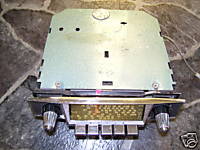 standard equipment, and if you wanted one you had to pay extra to have
them fitted as an accessory. And! if you did, odds on they would fit
either a Ferris or an Astor Diamond Dot, both of which had one oval
speaker, usually in the centre of the dash board under a factory fitted
metal grill. Radios back then were AM receivers and that was it. In 1980
the Oz Government offered a limited number of FM licenses (2 in Melbourne
and Sydney and one in each other capital city) and car manufacturers began
to install AM/FM radios in their cars, firstly in Japanese cars, then they
became the norm in all new cars. Next to appear was the AM/FM radio with a
stereo cassette player which came with a set of speakers, usually fitted
in the shelf behind the back seat. We now had three sources of music, AM,
FM and cassette. Next to appear was the CD, and manufacturers who produced
‘luxury’ cars began to add a CD player to the mix. This was usually in the
form of a 6 stack CD player which was fitted in the boot and this gave the
option of listening to either AM, FM, stereo cassette or CD. Gradually the
CD player began to be fitted to all cars, though some only got single CD
players.
standard equipment, and if you wanted one you had to pay extra to have
them fitted as an accessory. And! if you did, odds on they would fit
either a Ferris or an Astor Diamond Dot, both of which had one oval
speaker, usually in the centre of the dash board under a factory fitted
metal grill. Radios back then were AM receivers and that was it. In 1980
the Oz Government offered a limited number of FM licenses (2 in Melbourne
and Sydney and one in each other capital city) and car manufacturers began
to install AM/FM radios in their cars, firstly in Japanese cars, then they
became the norm in all new cars. Next to appear was the AM/FM radio with a
stereo cassette player which came with a set of speakers, usually fitted
in the shelf behind the back seat. We now had three sources of music, AM,
FM and cassette. Next to appear was the CD, and manufacturers who produced
‘luxury’ cars began to add a CD player to the mix. This was usually in the
form of a 6 stack CD player which was fitted in the boot and this gave the
option of listening to either AM, FM, stereo cassette or CD. Gradually the
CD player began to be fitted to all cars, though some only got single CD
players.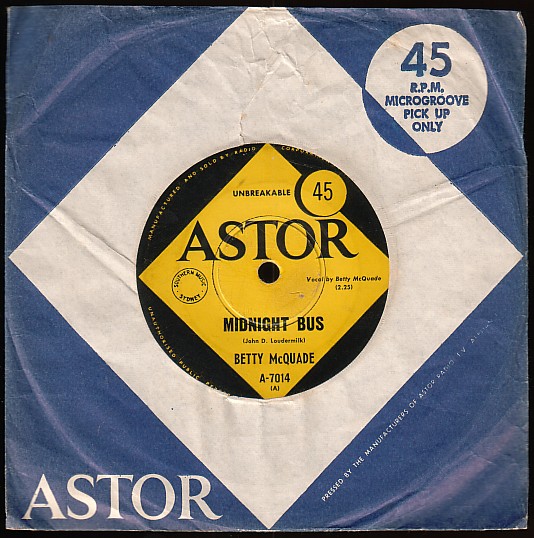 In
the past five years things have gone much further: Now you can buy a car
with AM, FM, six-disc CD in dash changers that also play MP3s. These sets
allow auxiliary-audio input, have USB ports, SD-card slots, Compact-Flash
slots, PC-card slots, onboard hard-drive music storage and iPod
integration. Alas, though, the poor old cassette player has gone.
In
the past five years things have gone much further: Now you can buy a car
with AM, FM, six-disc CD in dash changers that also play MP3s. These sets
allow auxiliary-audio input, have USB ports, SD-card slots, Compact-Flash
slots, PC-card slots, onboard hard-drive music storage and iPod
integration. Alas, though, the poor old cassette player has gone.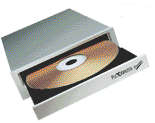 damaged. In all CD’s, the data is stored in digital form, that is, the
information on the disc is represented by a series of 1s and 0s. In
pressed CD’s, these 1s and 0s are represented by millions of tiny bumps
and flat areas on the disc's reflective surface. The bumps and flats are
arranged in a continuous track that measures about 0.5 microns (millionths
of a meter) across and 5 km long. To read this information,
the CD player passes a
damaged. In all CD’s, the data is stored in digital form, that is, the
information on the disc is represented by a series of 1s and 0s. In
pressed CD’s, these 1s and 0s are represented by millions of tiny bumps
and flat areas on the disc's reflective surface. The bumps and flats are
arranged in a continuous track that measures about 0.5 microns (millionths
of a meter) across and 5 km long. To read this information,
the CD player passes a
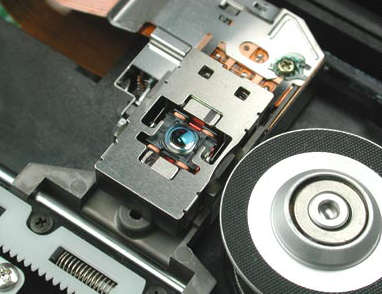 when
the dye is left translucent, in the same way that it will only bounce back
from the flat areas of a pressed CD. By selectively darkening particular
points along the CD track, and leaving other areas of dye translucent, the
‘burner’ creates a digital pattern that a CD player can read. The laser
darkens the material to encode a 0 and leaves it translucent to encode a
1. So, even though the CD-R disc doesn't have any bumps pressed into it,
it behaves just like a pressed disc.
when
the dye is left translucent, in the same way that it will only bounce back
from the flat areas of a pressed CD. By selectively darkening particular
points along the CD track, and leaving other areas of dye translucent, the
‘burner’ creates a digital pattern that a CD player can read. The laser
darkens the material to encode a 0 and leaves it translucent to encode a
1. So, even though the CD-R disc doesn't have any bumps pressed into it,
it behaves just like a pressed disc.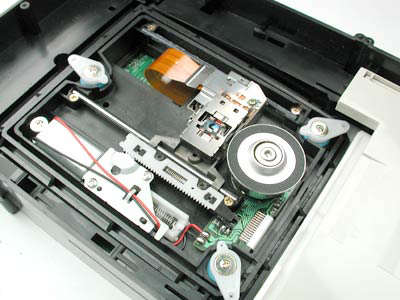

 prescriptions,
all your further prescriptions are free". This, of course, was a
deliberate mistake on my behalf, just to see who was paying attention. I'm pleased to say that Terry Walter from 32RTC was, and he found the
error and has set us straight.
prescriptions,
all your further prescriptions are free". This, of course, was a
deliberate mistake on my behalf, just to see who was paying attention. I'm pleased to say that Terry Walter from 32RTC was, and he found the
error and has set us straight.